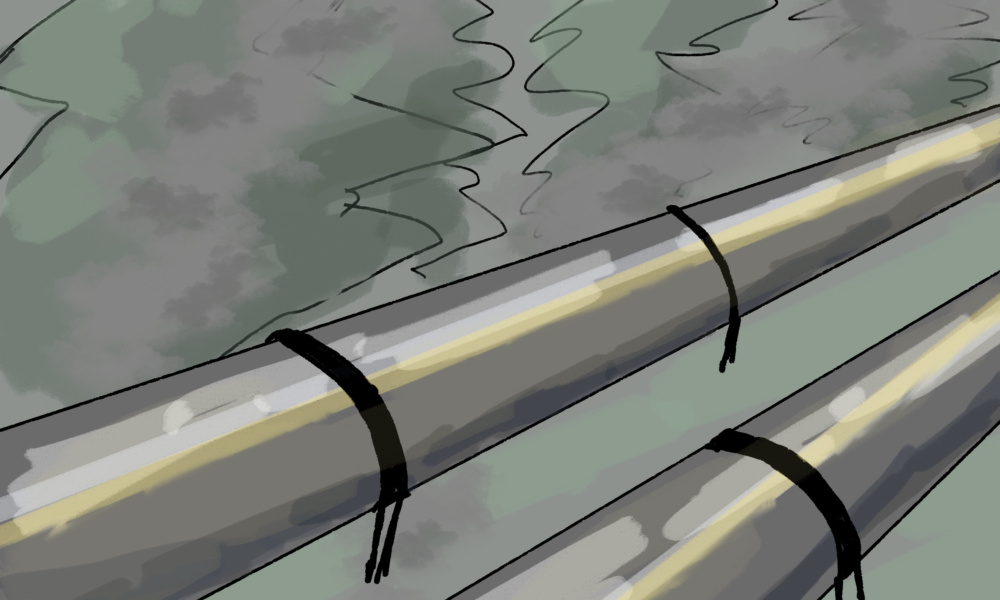A wave of reinvigorated commitment to infrastructural expansion is sweeping the uppermost echelons of Canadian government. On Sept. 10, as an extension of the Building Canada Act, Prime Minister Mark Carney released a list of five major ‘nation-building’ projects aiming to “turbo-charge” the Canadian economy and create jobs. Meanwhile, Quebec Premier Legault is calling to suspend environmental goals to make economic development the province’s top priority. Instead of prioritizing the environment and its inhabitants, powerful political leaders like Carney and Legault are promoting an image of national development rooted in spectacle and glorified extraction.
While Carney claims his proposed nation-building projects are geared towards “protecting Canada’s rigorous environmental standards,” their environmental impacts will be undoubtedly detrimental—an outcome Legault is eager to ignore. One of these five projects, for example, aims to double the production of liquified natural gas (LNG)—a greenhouse gas which is 80 times more potent than CO2 in the short term, and 30 times more potent in the long run. Two other projects aim to expand mines in Saskatchewan and northwest BC—an endeavour that destroys land, uproots ecosystems, and contaminates water and air with harmful sulfuric acid.
Normally, such projects would undergo strict environmental assessment to ensure their alignment with Canada’s national sustainability standards and climate plan, such as reducing national carbon emissions by 40 per cent below the 2005 levels by 2030, and reaching net-zero emissions by 2050. However, Legault’s demands to speed up these assessment processes threaten to break this promise and reverse the decisive progress Canada has made in reducing CO2 emissions over the past several years.
Additionally, though Carney advertised the inclusion of Indigenous leaders in the planning process, the burden of ecological damage from these projects falls heavily on the shoulders of Indigenous and rural communities. Such damage reflects a long history of eco-racism against Indigenous Peoples in Canada who are already disproportionately harmed and displaced by extractive mining and the production of oil and gas. Rewriting ecological guidelines to enable destructive ‘nation-building’ projects does not uplift Canada’s national image—it corrupts it by uprooting Indigenous land, polluting public air and water with toxic sulphur, and eschewing Canada’s uniquely low carbon footprint.
A ‘nation-building’ agenda whose success relies on environmental destruction is neither people-first nor, in the long run, profit-first. A people-first agenda would not pollute or uproot the environments in which people live and upon which they depend. An agenda committed to long-term profit would not raze ecosystems irreversibly to the ground.
In fact, a truly people-first—and, in the long run, profitable—agenda is one that starts with an eye toward the environment. In the past ten years, the damages of climate change have cut $25 billion CAD off of Canadian GDP—a deficit which will compound over time if the country does not commit to nature-based climate solutions and damage control. Investing in the environment is the smartest choice Canada can make if it seeks to be truly nation-building, rather than risking its future for the allure of immediate profit.
Despite the federal government’s demonstrated disregard for Canadian ecosystems—and thus Canadian people—McGill has risen to the occasion as a leader in sustainability, setting a crucial precedent for other institutions. Not only is the university publicly committed to the goals of zero-waste, carbon neutrality, and increased climate resilience, but it has taken tangible steps towards these goals.
As students, we must familiarize ourselves with McGill’s sustainability plan and adopt actionable steps to push it forward. As an institution, McGill must not settle into complacency, but continue to be proactive in revising, adapting, and expanding its sustainability goals.
At the federal level, Canada’s political leaders must reconceptualize the kind of nation they want to build, beginning with a reaffirmation of Canada’s legally-bound commitment to the Paris Agreement. Right now, Carney and Legault are sending a clear message that economically successful nation-building is, by design, in opposition to environmental sustainability. It is only when our leaders abandon this conviction that Canada can abandon nation-branding for true nation-building. By reassessing the relationships between human, environmental, and economic prosperity—beyond those assumed by capitalist political rhetoric—we find that, in fact, it is not hard to imagine a world in which the three are mutual beneficiaries, where the improvement and strengthening of one brings the same prosperity to the others.





